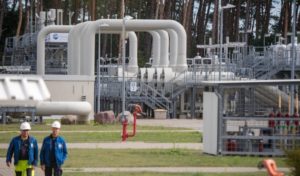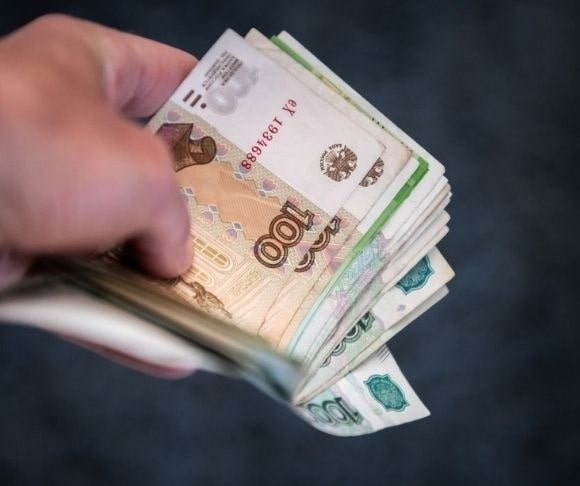When Russia invaded Ukraine, Western leaders vowed that sanctions and financial restrictions would cripple the Russian economy and force President Vladimir Putin to rethink his aggression in the region. Yet after half a year of military conflict, Moscow’s economic climate is doing well. In some cases, Russia is faring better than other European countries. From a robust energy sector to competent monetary decision-making, it is challenging to envision the West successfully metastasizing Russia’s economic landscape into a bleak wasteland, like the setting in a Fyodor Dostoevsky novel. So, how is the Russian economy performing under present-day conditions?
Data from the Russian Economy
 Since March, the Russian economy has been bombarded with everything, and yet it has been as strong as a hammer and sickle. The month-over-month consumer and price inflation rates have declined, the gross domestic product (GDP) growth rate has been better than initially anticipated, the S&P Global manufacturing purchasing managers’ index (PMI) clocked in at a surprising 51.7, and industrial output weakened at a slower pace. Overall, the statistics have defied everything the talking heads promised several months ago.
Since March, the Russian economy has been bombarded with everything, and yet it has been as strong as a hammer and sickle. The month-over-month consumer and price inflation rates have declined, the gross domestic product (GDP) growth rate has been better than initially anticipated, the S&P Global manufacturing purchasing managers’ index (PMI) clocked in at a surprising 51.7, and industrial output weakened at a slower pace. Overall, the statistics have defied everything the talking heads promised several months ago.
These figures have resulted in two key developments: policy easing and a strengthening ruble.
The central bank stunned global financial markets by slashing interest rates by 150 basis points to 8%, suggesting that it has the room to support the economic landscape as inflation tumbles. Bank of Russia Governor Elvira Nabiullina suggested that officials could pull the trigger on another rate cut before the year’s end as long as consumer prices continue to come down.
Despite cratering immediately after the war in Ukraine began, the ruble rebounded and erased its losses against the US dollar. It has been one of the top-performing currencies in global foreign exchange markets, advancing nearly 18% against the greenback. This might not matter much in the short term, since it cannot be used in international transactions. However, in the long-term, it could be critical in the de-dollarization campaign among BRICS countries.
In addition, Putin’s war chest has remained relatively steady, hovering around $600 billion. This is noteworthy because Western governments prohibited Russia from making foreign debt payments, blocking the Kremlin from covering its dollar-denominated sovereign debts and paying US investors. When Moscow tried paying in rubles, it was prevented from doing so. Therefore, Russia has officially defaulted, although it ostensibly has the funds based on what sits in its foreign exchange reserves.
Russian Energy Persists – For Now
The Eastern European state’s energy sector has been heavily targeted. North America and the European Union vowed to ditch Russian petroleum products, with many eurozone parties looking to kick the habit. The Group of Seven (G7) is going as far as instituting a price cap on Russian crude oil, which is nothing more than an empty gesture since it requires India and China to get on board. Kremlin leaders dismissed the measure, confirming that it would stop shipping energy to states that adopt this policy and would expand its presence in Asia. Moreover, it should be noted that China sells its discounted gas imports from Russia to Europe.

(Photo by Stefan Sauer/picture alliance via Getty Images)
Russia has earned approximately $160 billion from oil and gas sales since the start of the war. It has sold vast amounts of energy to China and India, as well as supplying allied neighbors with bubblin’ crude. Moscow is now producing more oil than ever before, allowing the nation to rake in even more profits. Putin sells discounted oil and gas to his friends, filling his buried treasure chest that can be used to service his war. Russian energy giant Gazprom is swimming in rubles, too.
“Despite the sanctions pressure and an unfavorable external environment, Gazprom demonstrated record-high revenue and net profit under IFRS [International Financial Reporting Standards] in the first half of 2022,” said Famil Sadygov, deputy chairman of Gazprom’s management committee, in a statement.
But can the good times last forever? West Texas Intermediate (WTI) and Brent crude prices have eliminated their post-war gains and are trading around $90 per barrel. While this is more than enough for Russia to keep filling its bank account, prices could potentially trend lower amid global recession fears. The Organization of the Petroleum Exporting Countries (OPEC) and its allies, OPEC+, recently slashed output by 100,000 barrels per day (bpd) on sliding worldwide demand concerns. There is also an expectation that the US will lift sanctions on Iran, allowing Tehran to flood the international energy market with more than one million bpd. China’s on-again, off-again lockdowns are trimming its crude imports. India has acquired so much oil from Russia that its inventories are overflowing, so it is unclear if New Delhi will keep its tab open.
That said, crude and natural gas are extremely fragile. Supplies are tight, and consumer demand could increase again this winter. For now, the ball is in Russia’s court, evident by the state-owned Gazprom suspending exports indefinitely. But changing market conditions, particularly in the form of demand destruction, could dismantle Putin’s stranglehold on the world.
Russia’s Future

(Photo by Silas Stein/picture alliance via Getty Images)
What is the future of the Russian economy? Here are a few of the most likely scenarios: a lengthy blacklisting from Western markets, a lack of access to global capital markets, and a prolonged economic downturn once the commodities boom fades. Reportedly, leaked internal papers viewed by Bloomberg suggest that the leadership is concerned about a years-long economic collapse. Moreover, while the energy sector is thriving, other industries could face irreparable damage.
“With diminished access to Western technologies, a wave of foreign corporate divestment and demographic headwinds ahead, the country’s potential growth is set to shrink to 0.5%-1.0% in the next decade. Thereafter, it will shrink further still, down to just above zero by 2050. Russia will also be increasingly vulnerable to a decline in global commodity prices, as international reserves no longer provide a buffer,” stated Alexander Isakov, a Russian economist, in the report.
The Western-led blockade could prevent Russia from importing critical materials, transporting crucial goods, and participating in global commerce. This is why Putin’s relationship with China is paramount for Russia’s survival. Without the red dragon, Moscow would slip into a long dark winter comparable to what occurred after the fall of the Soviet Union. At this point, Putin can only pray that China emulates Russia by invading Taiwan.




